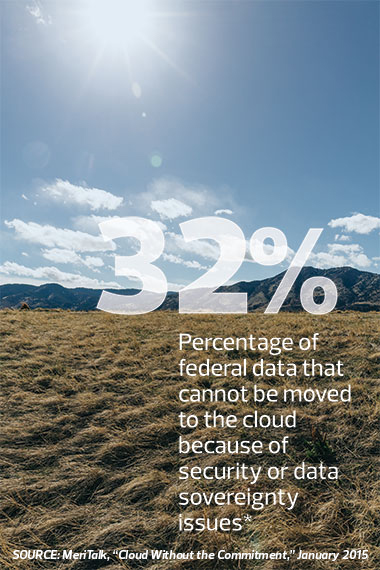FEMA, Interior Department See Tangible Benefits of Flexible Cloud Solutions
Employees at the Interior Department flock to the agency’s Financial and Business Management System (FBMS) twice a year to prepare financial statements for audits at the end of both the fiscal year and the calendar year.
In the past, those work surges put so much pressure on the department’s in-house data center that its Business Integration Office had to pull in all available processing capacity from its research and development, testing and training environments, just to keep FBMS online.
“We robbed Peter to pay Paul,” says Martin Quinlan, co-director of the Business Integration Office, which is responsible for sustaining, optimizing and leveraging FBMS to make it fully available to all Interior Department bureaus. “Essentially, we paid for too much capacity during most of the year, but still didn’t have enough when we really needed it.”
In late 2013, the Interior Department signed a $10 billion contract to acquire unlimited cloud hosting services through a new departmentwide contract. The Business Integration Office jumped at the opportunity to shift FBMS to the cloud.
In a first for the federal government, the Business Integration Office moved the FBMS to a government-only cloud. Now, when the system’s 12,000 users overload the system with demand, Quinlan and his staff can order the additional memory or storage required.
“Our cloud provider can make those adjustments overnight,” Quinlan says. “It helps us control costs. We now pay only for consumption as opposed to capacity, and we always have what we need to get the work done.”
Using the Cloud to Handle High Demand
While the cloud-based solution saves capital, a growing number of agencies rely on the cloud to handle unique needs for burst — those periods of expected and unexpected work surges — without straining or depleting resources, says Shawn McCarthy, research director at IDC.

The IRS harnesses the cloud to deliver extra storage on an as-needed basis during tax season and other busy periods, McCarthy says. Other agencies leverage the cloud to capture and process public comments on a proposed regulation or provide high-demand streaming video, photos or reports. Before cloud computing was an option, those processes took their toll on IT infrastructure, slowing services or stopping them altogether.
McCarthy says cloud vendors frequently help their clients meet evolving or changing needs, and are comfortable managing such changes quickly.
The same applies to other computing needs, such as Infrastructure as a Service.
“Agencies may want to lease additional network capacity every third week of the month because that’s when they see demand spike, and they need that type of elasticity,” McCarthy says.
In many instances, work surges come unexpectedly, but the cloud’s flexibility makes it a trusted solution that supports change on the fly.
Improving Response Times
The Federal Emergency Management Agency (FEMA) hosts two applications in the cloud that help personnel respond in the aftermath of tornadoes, wildfires, blizzards and other catastrophic events.
One application allows the agency to quickly coordinate reservists to state and local resources, while another tracks emergency operations center tasks.
FEMA launched both applications about two years ago, and they’ve boosted response capabilities during and after several disasters, including flooding in South Carolina and wildfires in California in 2015. FEMA also relied on the apps during 2016’s East Coast blizzard.
Because they’re hosted in the cloud, the applications scale quickly to reach all potential users and resources, no matter their location. The applications also allow agency leaders to make rapid, accurate decisions about force strength and needs on the ground, FEMA CIO Adrian Gardner says.
“Because of the cloud, we are able to build in analytics that give us a unique perspective on the data. As a result, we’re better able to manage activities within the emergency ops center.”
Gardner says the cloud requires only a brief development lifecycle, lightening in-house IT workloads when demand surges. The result is more computing power in a shorter time frame.
Benefits of the Cloud
Every agency that manages sudden workload spikes can’t necessarily turn to the cloud to meet high-demand seasons or unexpected needs, and the challenges inherent in flexible cloud technology are the same as those in more permanent cloud solutions. Agencies that face workload surges should consider the cloud first, however, especially as a resource for new applications, McCarthy says.
“In most instances, the cloud is not only less expensive, but many providers work with the elastic needs of organizations all the time and can provide real insight into how it can help,” he says.
Quinlan says the cloud allows his teams to realize a number of benefits. FBMS end users enjoy better application performance due to faster access to upgrades, and his own staff find it much easier to manage costs alongside other responsibilities.
“There’s a real peace of mind, knowing that we can grow and keep pace from a technology point of view without worrying about that five-year technology refresh,” he says. “If we need to make changes, we work with our provider to make them, and we just keep marching along.








